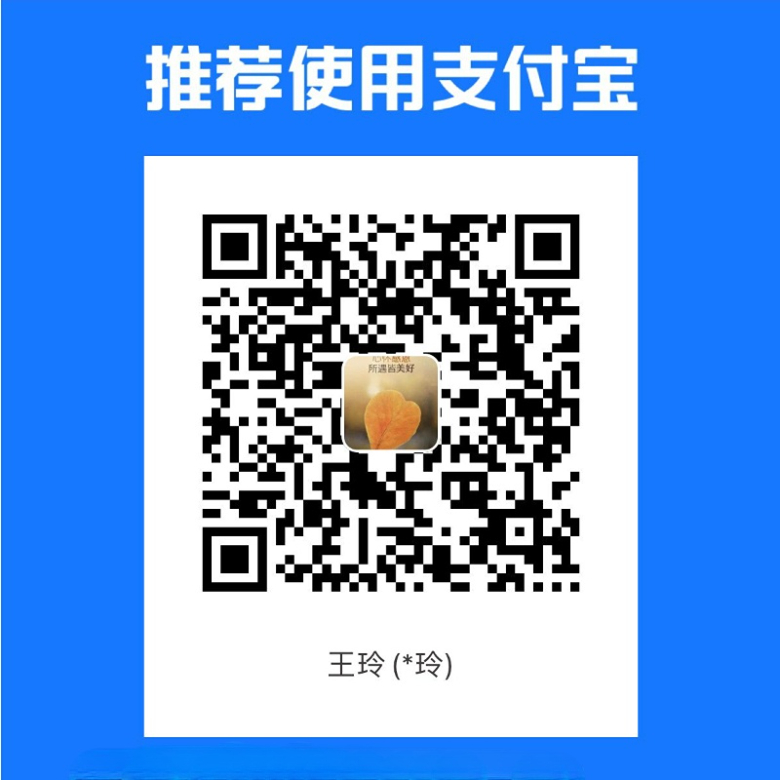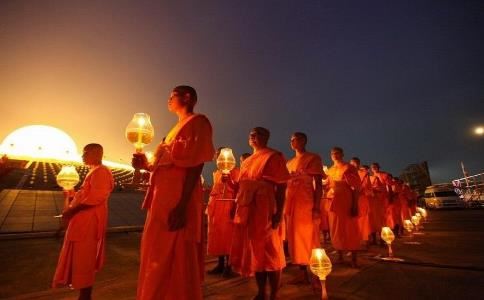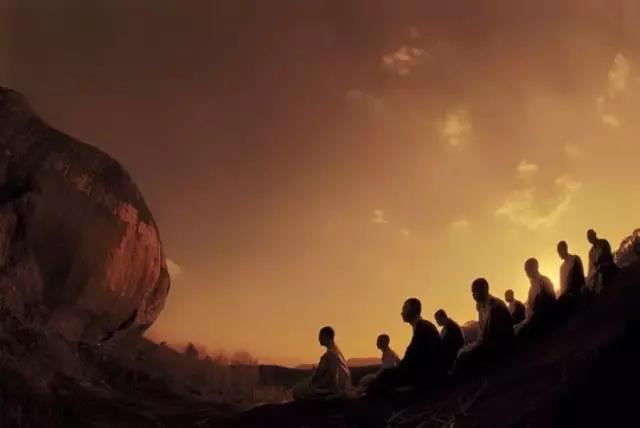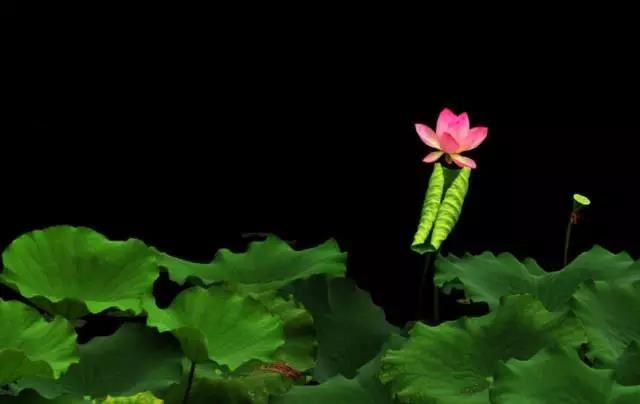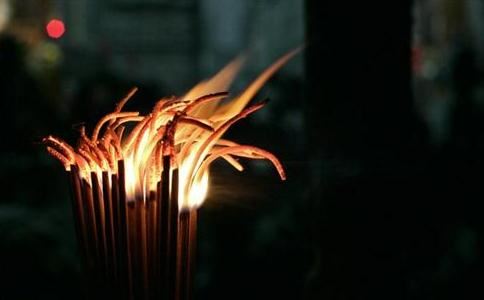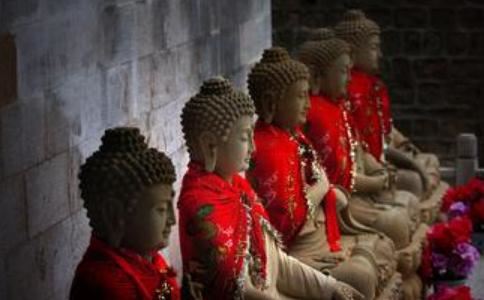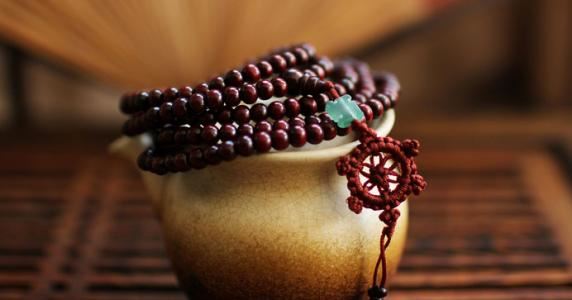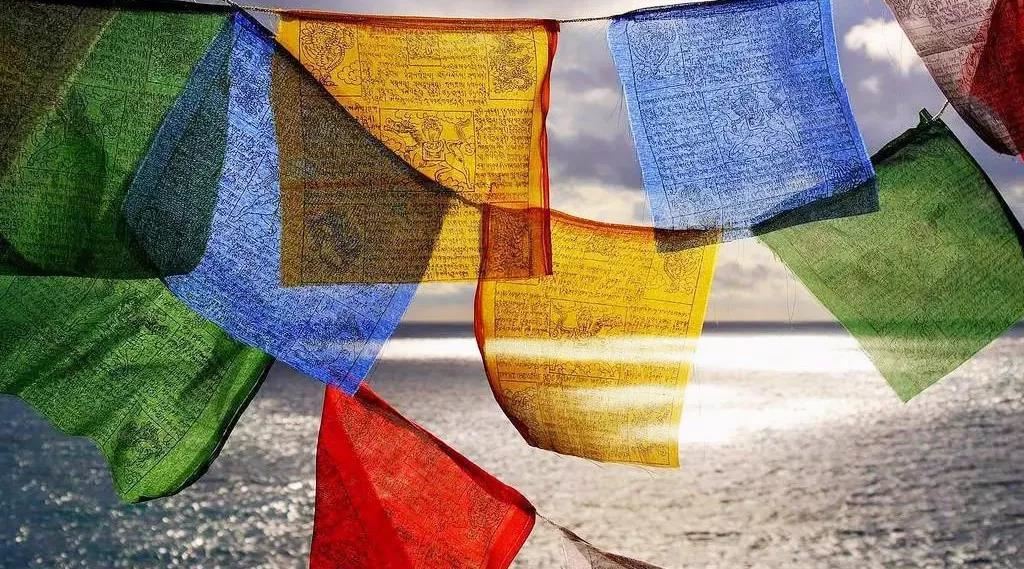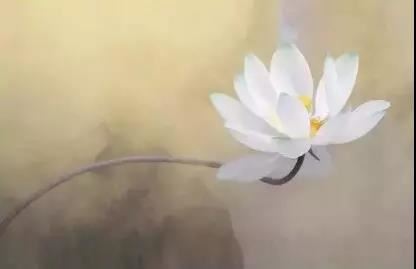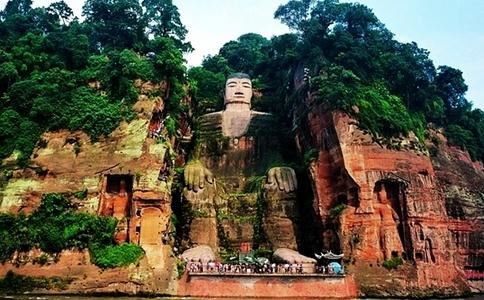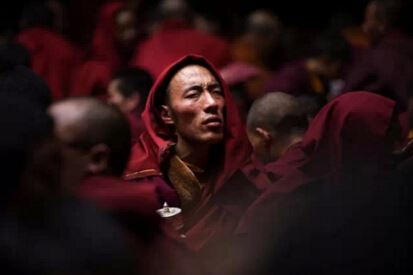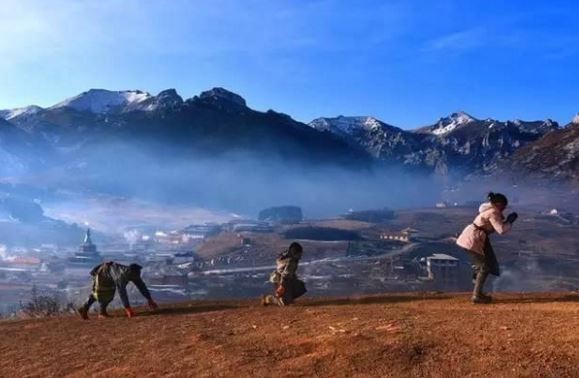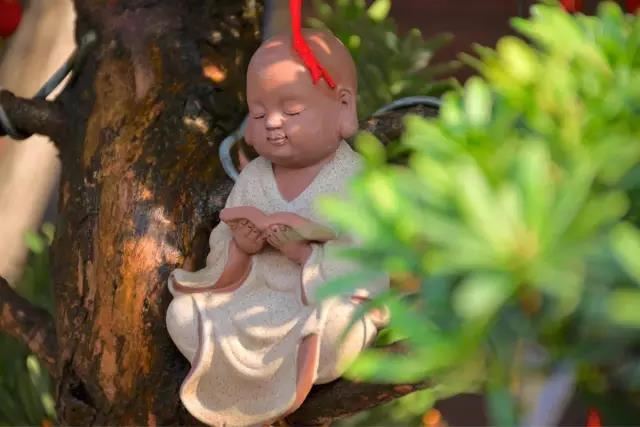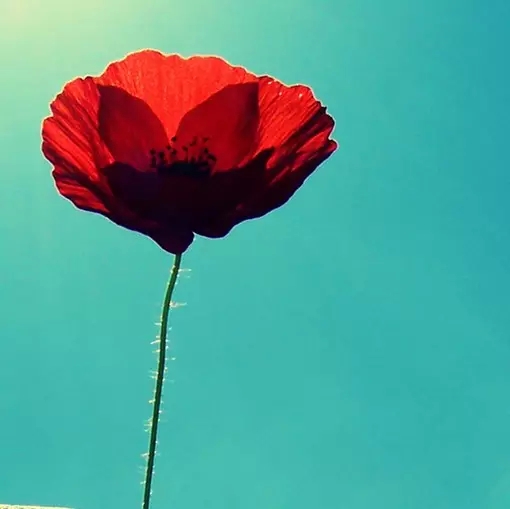
Master Tihui: What is good?What is bad?
2020-07-15 More articles

《Examination of the translation of Four-point Law
Zongsheng
Abstract: The "Fourth Parts Law" from India, the broad law of the Dharmazang tribe, has different records of the translator, time, and number of Scriptures translated by various documents.This article proposes through the explanation of various documents: When the Four-Part Vinaya was translated, when Zhifaling had already heard Buddha Yashe recite the Four-Part Vinaya when he was seeking the Dharma in the Western Regions. When Buddha Yashe came to Chang'an, he was invited to recite the Sanskrit text of the Four-Part Vinaya again, which was translated into Chinese by Zhu Buddha, and the Tao Han was recorded in the text, and then it was repeatedly proofread by Zhifa and Huibian, thus forming a fixed version of the Four-Part Vinaya;The time should be about the 12th to 14th years of Hongshi (410—412)between;The number of volumes has been different from opening and closing of forty, forty, forty, forty, forty, forty, forty, forty, forty, forty, sixty, and sixty-one, and is determined by the division of sixty volumes.The article ends up pointing out that although there are different records of the translators, time and volumes of the "Fourth Parts" translated, it does not affect the spread of the "Fourth Parts", which fully demonstrates that the monks attach great importance to the content and spiritual religious sentiments of the precepts.
introduction
The Sutra is the carrier of the spread of Buddhism. The current Sutra includes three parts: Sutra, Vinaya and Treatise.Among them, the content of the Vinaya includes not only the personal behavioral norms formulated by the Buddha based on the living conditions of the monks and monks, but also the group life rules formulated by the Buddha for the monks' tutoring.The Buddha formulated numerous behavioral norms and living standards, mainly to subdue the minds and natures of sentient beings, to cure the evil deeds of sentient beings, so that the hearts of sentient beings can reach peace and increase good deeds.From the time the Buddha formulated the precepts to the Buddha's death about one hundred years, the Buddhist disciples basically had no big objection to the precepts.This situation continued until the Buddhist period of the sects. Due to different opinions and divisions on the advocacy of precepts, especially on the issue of detailed rules, the law codes of different sects were formed, and the five law codes are representative law codes of them.The five laws are: "Ten Recitations" [1]、《Mahasanghichi [2]、《Four-point law [3]、《Five-point Law》 [4]、《Law of Liberation. [5]
The four broad laws, except for the "Law of Liberation", have been translated in China one after another.Since the translation of the four Guanglu, they have been popular in famous places in the north and south to varying degrees.But later, the most popular Hongtong was the "Four Fen Law".After the translation of this law, lawyer Facon first explained and advocated this law at Wutai Mountain North Temple and promoted it [6],His disciple Daofu wrote the Six Volume of "Four Parts of the Laws" [7],Generally speaking, it is just segmented and scientific.The first time the promotion of the "Fourth Law" is Mr. Huiguang (468—537)[8]。In addition to telling the "Fourth Part Laws", he also explained the "Fourth Part Laws" and formed a "Fourth Part Laws" of 120 papers. He also personally deleted the "Jiama Precepts Version".This laid the foundation for the promotion of the "Four Parts Laws".Among Huiguang's disciples, there were Daoyun, Daohui, Hongli, Tanyin and others who inherited Huiguang and promoted the "Four Parts Laws".Due to their efforts, the promotion and influence of the Four-point Law gradually expanded.Daoxuan, the third disciple of Huiguang (596—667),《The promotion of the Four-Part Law can be said to be a prosperous and formed one of the eight major sects in China, referred to as the Vinaya School.Since the formation of the Four-Part Vinaya School, monks and nuns in Han areas have always regarded the Four-Part Vinaya as the standard.
However, the "Four Parts of the Law", which has always been regarded as the norm in the Han monks and nuns, have different records in the translation of their translators, translation time, and number of scriptures in the monks' biography, scriptures, and prefaces.Regarding the above questions, the contemporary master Yinshun [9]、Master Longlian [10]All have paid attention to it to varying degrees.Inspired by the views of the two great masters, this article intends to conduct a comprehensive investigation of the issues in the translation of the "Four Parts of the Law", in order to have a comprehensive understanding of the translation of the "Four Parts of the Law" that Han monks and nuns attach importance to.
1. Translator of "Four-part Law"
Regarding the translator of the Four Parts of the Law, there are various different records in the prefaces, records, and monks’ biography:
1、Records of Buddha Yashe's recitation, Buddha's recitation, and Taoist experience
Sengzhao (384—414)In the Preface to the Long Agama Sutra, it is recorded:
Twelve years of Hongshi (412),In the previous chapter of the year, I asked the monks of Sanzang Buddha Yashe to come out of the Vinaya.
Forty volumes, fourteen years have passed.In the fifteenth year, I was in Zhaoyang and finished the "Chang Ah Han".The monk Zhu Buddha in Liangzhou is chanted as
Translation, the Taoist priest of Qin State received the pen.The monks of Jingxia are now in the school [11]。
From Sengzhao's records, we can see that the "Four Parts of the Vinaya" and "The Sutra of the Long Ahgama" were produced by Buddha Yashe, and the translation was by Zhu Buddha Nian, and Daohan served as the pen.
Monkyou (445—518)In the third volume of "The Records of the Tripitaka" it is recorded:
Those who have no virtue in Tan, Liang Yan’s Dharma Mirror... are the "Four Parts Laws".It is from the Buddha Yashe, the monk Qibin Sanzang.At first, Yeshe recited the "Four Parts of the Law" by his lord, and did not bring Hu's book to visit Chang'an.Yao Shuang, the captain of the Qin Sili, wanted to ask Yeshe to live in Zhongshi, but still ordered him to leave... Therefore, Master Seng Zhao wrote the "Preface to the Sutra of Chang Ahan" and said: In the twelfth year of Qin Hongshi (412),In the previous chapter of Yanmao, the right general, the Sili-secret commander Yao Shuang, gathered 500 famous monks at the Zhongshi of Chang'an, and asked the monks of Sanzang Buddha Yeshe to give birth to four parts of the Vinaya, forty volumes, and fourteen years.In the fifteenth year, I was in Zhaoyang and finished the "Chang Ah Han".The monk Zhu Buddha in Liangzhou was translated as a translation, and the Taoist priest in Qin State received the pen. [12]。
The records of Sengyou here clearly state that he followed the records of Master Sengzhao in the "Preface to the Sutra of Chang Ah Han".
In addition, Sengyou also recorded in the second volume of "The Records of the Tripitaka":
《The twenty-two volumes of Chang Agaga Sutra were published in the fifteenth year of Qin Hongshi, and Zhu Buddha recited and translated it.
《Forty-five volumes of Tan Wudiluo, have been included in the Law Record.
《The Void Sutra is a volume, or it may be called the Void Sutra.After Sanzang returned to the country, he got this sutra in Jupin and sent it to Liangzhou with a merchant.
《Volume 1 of the Book of Tan Wude Precepts.
The four right parts, sixty-nine volumes, during the reign of Emperor An of Jin, the monk Shizang of Qibin, Buddha Yeshe, translated it from Chang'an in Yao Xinghongshizhong. [13]。
Monkyou records this article, including the "Tanwu Dilu" (Four-point law )The four scriptures included were translated by Buddha Yashe, which should be a brief record of Sengyou based on Sengzhao's "Preface to the Sutra of Chang Ahgama".
Huijiao also records in Volume 2 of "Biography of the Monk":
Yeshe first recited the "Tanwu Dilu" (That is, the four-part law ),Yao Shuang, the pseudo-Sili Captain, asked to order him to be released...that is, the 12th year of Hongshi (410),The Four-part Laws were translated, with forty-four volumes, and the Long Ah Han, etc.The monk Zhu Buddha in Liangzhou is translated as Qin's words, and the Tao is written with the pen. [14]。
Huijiao believes that the Four-part Vinaya is recited by Buddha Yashe in Sanskrit, and translated into Chinese by Zhu Buddha. (Qin Yan ),Daohan serves as the pen.
Later, this statement was also adopted in the "Kaiyuan Buddhist Book" and the "Zhenyuan Xinding Buddhist Book Catalogue".
Zhisheng recorded in "Kaiyuan Teachings":
Yeshe first recited "Tan Wude" and the Sili Chief Yao Shuang asked to order him to come out... That is, Wushen, the tenth year of Hongshi (408),Translated the "Fourth Parts of the Law" and "Chang Ah Han" and other sutras, until the fifteenth year of Gui Chou (415)finished.The monk Zhu Buddha in Liangzhou recites the words of Qin, and the Tao is filled with the pen.Translation of the Bijie [15]。
Yuanzhao also records in the "Catalogue of the New Definition of the Zhenyuan Buddhism":
Yeshe first recited the "Tanwudilu" and the Sili Captain Yao Qin asked for an order to be released... That is, the tenth year of Xinhongshi (408)Wushen, translated "Fourth Parts of the Law" and "Chang Ah Han", etc., after fifteen years (415)The Guichou precedes the end.The monk Zhu Buddha in Liangzhou is translated as Qin's words, and the Tao is written with the pen, and the translation is explained by the seat [16]。
《The translation of the "Four-part Laws" of Kaiyuan and the "Table of the "Tables of the Secrets of the Secrets of the Secrets" are consistent with the records of Sengzhao in the "Preface to the Sutra of Chang Ah Han" and Huijiao in the "Biography of the Empress of the Monk".
2、The records of Buddha Yashe’s recitation, Buddha’s chanting, and Taoist entrusting with pens.
Fei Changfang recorded in Volume 8 of "The Three Treasures of the Ages":
《The Chang Agama Sutra was published in the fifteenth year of Hongshi, and Zhu Buddha recited the pen and received it.See the second Qin Lu.
《Volume 2 of the Void Sutra, later on (return )When he returned to the foreign country, he came to Fengpin to receive this sutra and sent it to the monks in Liangzhou.Seeing the Tao, Hui, Song and Qi Records.
《Tan Wudilu" forty-five volumes, Qin's words and Dharmazang, this is the name of a person, which is the master of the four parts of the law, or sixty volumes.
《The first volume of the precepts of Tan Wude, the first two precepts are found in the Miscellaneous Records of the Jin Dynasty.
The four right parts are combined with 69 volumes, the Emperor An of Jin Dynasty, Buddha Yeshe, the monk Sanzang of Jubin, and the two men of Yeshe first recited the "Four Parts of the Vinaya" and asked to come out at that time... The following is translated from the Four Parts of the Vinaya in the 12th year of Hongshi, and then the Session was explained in the fifteenth year... The two men and women who wrote the Buddhist scriptures, Hanzhu, and Buddha Recitation. [17]。
Fei Changfang records that the "Four Parts of the Vinaya" was recited by Buddha Yashe Sanskrit, and Daohan and Zhu Buddha Nian were the authors.However, there is no record of who translated the Sanskrit text recited by Buddha Yashe into Chinese.
Daoxuan also recorded the same record in Volume 3 of "The Records of the Tang Dynasty":
Abandon (Yeshe )First recite the "Fourth Parts of the Law"... The twelve years of Hongshi (410)Translation of Four-part Laws, etc., and the interpretation of the 15th year... Samuel Daohan and Zhu Fuyan wrote a pen and received [18]。
The records of Daoxuan are consistent with Fei Changfang's statement.
3、Buddha Yashe Gongzhu Buddha Recitation
The Dharma Sutra is recorded in the first volume of the "Catalogue of Sutras":
《Four-part Law" 61 volumes, translated by Buddha Yeshe of the Later Qin Dynasty [19]。
Yanzong also recorded in Volume 5 of the "Catalogue of Sutras":
《Sixty volumes of the Four-part Law, translated by Buddhist monks of the Later Qin Dynasty, Buddha Yashe Gongzhu [20]。
The Dharma Sutra and Yanzong clearly pointed out that the "Four Parts of the Vinaya" was translated by Buddha Yashe and Zhu Buddha Nian.
In addition to the three differences recorded in the above literature, Master Longlian believes that:
《The Book of Dharma Sutra says that the Four-part Vinaya is entitled as the translation of Buddha Yashe Gongzhu Buddha. This is probably because the Biography of the Emerging Monk said that Buddha Yashe Gongzhu Buddha had recited and translated the "Long Ahgama Sutra" and so on. He believed that the translation of the Four-part Vinaya was also translated by the two of them. [21]。
Here, Master Longlian seems to think that the "Fourth Part Vinaya" is just independently translated by Buddha Yashe.In Master Longlian's view, saying that the "Four Parts of Vinaya" was translated by Buddha Yashe and Zhu Buddha's Buddhist Buddhists was based on the "Biographies of the Emerging Monks" that Buddha Yashe had translated the "Long Agama Sutra".In fact, there are also records in the "Biography of the Emerging Monk" that Buddha Yeshe and Zhu Buddha Nian translated the "Four Parts of the Vinaya". Master Longlian seemed to have ignored this, so he made the above judgment.The "Chronology of Buddhism History" also holds this statement. [22]
Among the various records above, except for the records in "The Collection of Tripitakas" and "Catalogue of Sutras", the rest record that Daohan was responsible for the translation of "Fourth Parts of the Laws" (Pen Received ),There is no different opinion on this.
But for Zhu Buddha's recitation, he is the responsibility of the pen. (Documentation )Or serve as a translator (Translated by Fan to Han ),But there are different records."The Records of the Three Treasures of the Past Dynasties" and "The Records of the Tang Dynasty" record that Zhu Fonian was responsible for the work of writing.However, the "Preface to the Sutra of Chang Ah Han", "Records of the Tripitaka", "Biography of the Empress Monk", "Records of the Teachings of Kaiyuan", and "Catalogue of the Teachings of Zhenyuan Xinding Buddhism" record that Zhu Buddha Nian was responsible for the translation work.Regarding this issue, Master Yinshun pointed out in his book "Complete the Original Buddhist Holy Books":
According to ancient records such as "The Collection of the Three Psalms of the Tripitaka" and "Biography of the Emerging Monk", "The Four Parts of the Vinaya" was published by Buddha Yashe, translated by Buddha's chanting, and the Tao is filled with the pen.To come out is to recite it out.The translation of the Four-part Vinaya was not a Sanskrit version at that time, so it was recited by Buddha Yashe.Translation is to translate the chanted Sanskrit into Chinese.The pen is written based on the translated Chinese.The situation of translation in ancient times is the case of translation.All of them are translated from the Southern and Northern Dynasties according to the Sanskrit version. The translation master always understands the Sanskrit Han, so there is no distinction between the translation and the translation. [23]。
Master Yin Shun clearly pointed out that Zhu Buddha Nian was in the translation of the "Four Parts Laws".
In addition, we might as well make some investigations based on the qualities that Buddha Yasheben possesses.The first volume of "Biography of the Emerging Monk" is recorded in the book "Biography of Zhu Buddha Nian":
Zhu Buddha was born in Liangzhou. He became a monk in his weak years. His career was pure and stable, and he was harmonious on the outside and had a good lesson in understanding.He satirized and learned many scriptures and roughly dealt with foreign scriptures, and his elegant teachings were particularly clear.I like to travel around for a while, and I am ready to observe customs, my family background is Xihe, my knowledge of the language, and my Chinese and Rong sounds and meanings are all understood. Therefore, although the reputation of moral education is lacking, I hear it very well.
Fu Dai Jianyuan (365—384)Among them, there were monks, Bacheng, Tanmo Nanti and others who came to Chang'an. Zhao Zheng asked to send out the sutras. At that time, the name of the gods could not be translated, and everyone recommended it. (Zhu Buddha )I recited, so I held the Sanskrit word and read it as Jin (Chinese )。Critically cut off doubts and keep the pronunciation straight.Until the 20th year of Jianyuan (384)In May, Tanmo Nan proposed to add one Agama and agama to Chang'an City, and Jiyishu monks, please (Zhu Buddha )I read it as a translation, and it was completed after two years.Two inclusions (Add one, medium )It's obvious, (Zhu Buddha )It is the merit of reading the translation [24]。
From the above quotations, we can see that Zhu Buddha's chanting is not only proficient in external learning, but also proficient in dialects in the Western Regions and other places. At the same time, he also participated in the translation of "Agama" and "Agama" and "Agama".His outstanding work has been praised by the church community.
Furthermore, Daoan also mentioned in the Preface to the Great Bhikkhu Precepts:
At the end of the year, he was in the quail fire, and from Xiangyang to Guanyou, he saw his fellow Taoist Tanmo who mocked Abhidharma and was sarcastic to him.So he ordered the monk Zhu Buddha of Liangzhou to recite and write his Sanskrit text, and Daoxian translated it, and Huichang wrote it [25]。
According to Master Daoan's records, Zhu Fonin had participated in the translation of the precepts of Tanmo Nianti and was responsible for recording the Sanskrit scriptures.
Therefore, according to the records of Zhu Buddha Nian's qualities in the translation work in "Biography of Zhu Buddha Nian" in "Biography of Zhu Buddha Nian", and the Master Daoan said that Zhu Buddha Nian should have a certain foundation for the law and scriptures.The author believes that in the translation of the "Preface to the Sutra of Chang Ah Han", "The Collection of the Three Gangs", "Biography of the Emerging Monks", "The Book of the Teachings of the Kaiyuan, and "The Catalogue of the Teachings of the Zhenyuan Xinding Buddhism", Zhu Funian was responsible for translating the "Four Parts of the Law" into Chinese, which should be reasonable.
As for the issue that Buddha Yashe was translated from Sanskrit when translated by the translation of the Four-part Vinaya, the records in various documents are basically the same.What is slightly different is that the "Preface to the Sutra of the Long Ah Han", "Records of the Three Treasures", "Biography of the Emerging Monks", "Records of the Teachings of the Kaiyuan" and "Catalogue of the Zhenyuan Xinding Buddhism" are recorded as "Yeshe first recites the Tanwu Phrases", "Records of the Tang Dynasty" and "Records of the Three Treasures of the Past Dynasties" are recorded as "Yeshe first recites the Four-Part Law", but the "Part of the Four-Part Law" is recorded as "I am asking for it again in my year. (Yeshe )Out of the Luzang” [26]。The above differences should be related to the experience of the branch law leadership.The Four-part Vinaya says that during the pursuit of Dharma in the Western Regions, the branch Dharma leader "will meet the Buddha Yashe, and have a good understanding of the sutras and laws, and the Three Tibetans, all of which are satirical and powerful." [27],In other words, when the branch Dharma led the way to seek the Dharma in the Western Regions, he had heard the Buddha Yashe recite the "Four Parts Vinaya".Therefore, after arriving in Chang'an, when Buddha Yashe recited the "Four Parts of Vinaya", it naturally became "re-invite the Vinaya", that is, when Buddha Yashe recited the Vinaya again.The "Three Treasures of the Past Dynasties" and "The Inner Canon of the Tang Dynasty" say, "Yeshe first recited the Four-Part Law", which is a refinement record of the situation of Buddha Yeshe's reciting the Four-Part Law twice in the Western Regions and Chang'an.
In addition, the "Preface to the Four Parts of Laws" also states that during the translation of the "Preface to the Four Parts of Laws", Zhifaling and his disciple Huibian "revised the translation and refinement, and kept the essence and end of the book and the end of the book." This shows that Zhifaling and Huibian repeatedly proofread the translated "Preface to the Four Parts of Laws", which is consistent with the situation that Sengzhao said in the "Preface to the Chang Ah Han Sutra" that "the monks in the Xia Dynasty were compiled and adjusted the first and last."
Therefore, to sum up, the translation of the "Four Parts of the Vinaya" was heard by the recitation of Buddha Yashe when Zhifa was in the Western Regions. After Buddha Yashe arrived in Chang'an, he asked him to recite the Sanskrit again, which was translated into Chinese by Zhu Buddha, and Daohan served as the pen. Finally, the "Four Parts of the Vinaya" was repeatedly proofread and determined by Zhifa and Huibian, and then the "Four Parts of the Vinaya" was formed.This fully reflects the rigor of ancient Chinese translation work.The "Dictionary of Buddha's Light" says that when the branch Dharma led back to Chang'an, the Sanskrit version with the "Four-part Laws" was inferred from the Sanskrit version. [28],It does not conform to historical facts.
As for the "Catalogue of Sutras" and the later popular "Four Parts of Vinaya" and "Four Parts of Precepts", the translator was titled "Buddha Yashe Gongzhu Buddha Recitation Translation", probably to highlight the importance of the two in the translation process.Some documents record "Translation of Buddha Yashe" or "Translation of Buddha Yashe" (out ),The Buddha's chanting and the Tao embraces the pen and receive the pen" should be inaccurate.
2. Time of translation of "Fourth Law"
There are also four records about the time of translation of the Four-part Law in the Sutra, preface, monk's biography and other documents:
1、The twelve year of Hongshi (410)By the fourteenth year (413)Translated
In the Preface to the Sutra of Chang Agama, Sengzhao said:
Twelve years of Hongshi (410),In the previous chapter of Yanmao, I asked the monk Buddha Yeshe of the Three Gangshuan to send out the Vinaya Collection for fourteen years.Fifteen years (414),Years in Zhaoyang are in full swing, and Ah Han has finished [29]。
Sengzhao clearly pointed out that Buddha Yeshe began to recite the "Four Parts of the Vinaya" since the twelfth year of Hongshi.It took about three years until the end of the fourteenth year of Hongshi.By the fifteenth year of Hongshi (414),He also recited the "Long Agama Sutra".The above is the record of Sengzhao.
2、Hongshi Chinese translation
In "The Collection of Tripitakas", Sengyou recorded:
《The twenty-two volumes of Chang Agaga Sutra were published in the fifteenth year of Qin Hongshi, and Zhu Buddha recited and translated it.
《Forty-five volumes of Tan Wude are included in the Law Record.
《A volume of the Void Scholar Sutra, or the Void Scholar Sutra, the Void Scholar Bodhisattva Sutra, after the Tripitaka (return )He returned to a foreign country and obtained this sutra at Jupin and sent it to Liangzhou with a merchant.
《Volume 1 of the Book of Tan Wude Precepts.
The four right parts, sixty-nine volumes, during the reign of Emperor An of Jin, the monk Shizang of Qibin, Buddha Yeshe, translated from Yao Qin Hongshizhong, in Chang'an [30]。
Sengyou's records are very vague, limited by the Hongshi period, and there is no specific start and end time.But he clearly mentioned that the "Long Agama Sutra" was translated in the fifteenth year of Hongshi.
3、Translated from the 12th to 15th year of Hongshi
Huijiao recorded in the second volume of "Biography of the Monk":
That is, in the twelfth year of Hongshi, he translated the Four-part Law... and grew Ah Han and others... until the fifteenth year of the meeting [31]。
Huijiao recorded here that from the 12th to the fifteenth year of Hongshi, Buddha Yashe translated the "Four Parts of the Vinaya" and "The Sutra of the Long Agama".
In addition, Fei Changfang recorded in "The Three Treasures of the Ages":
The four-part law was translated into the 12th year of Hongshi, and the meeting was resolved in the fifteenth year of [32]。
Fei Changfang records that Buddha Yashe translated the "Four Parts of the Vinaya" and other scriptures from the 12th to the 15th year of Hongshi.At the same time, Fei Changfang is in "The Three Treasures of the Past Dynasties" [33],It is also clearly mentioned that Buddha Yashe translated the "Long Agama Sutra" in the fifteenth year of Hongshi.
Later, Daoxuan also recorded in the third volume of "The Record of the Tang Dynasty":
In the 12th year of Hongshi, the translation of the Four-part Laws, etc., the fifteenth year of the meeting was released [34]。
The records of Daoxuan are consistent with those of Fei Changfang, and Master Yin Shun also adheres to this statement. [35]。
4、Translated from the tenth to fifteenth year of Hongshi
Zhisheng recorded in the fourth volume of "Kaiyuan Buddhist Records":
That is, in the tenth year of Hongshi, Wushen, translated the Four-part Rules and grew the Ahan Sutra, and ended in the fifteenth year of Guichou. [36]。
The record of Zhisheng is that Buddha Yashe translated the "Four Part Vinaya" and the "Long Agama Sutra" from the tenth to the fifteenth year of Hongshi.
Yuanzhao also holds this theory in the sixth volume of the "Zhenyuan Xinding Teachings Catalog", as recorded in this record:
That is, in the tenth year of Hongshi, Wushen, translated the "Fourth Parts of the Law" and "Chang Ahan" and other sutras, and the fifteenth year of Guichou was completed. [37]。
The records of Yuanzhao are consistent with those of Zhisheng, and Master Longlian also adheres to this statement. [38]。
Based on the above four records, the first thing to be sure is that at the latest in the fifteenth year of Hongshi, Buddha Yashe translated the "Four Parts of the Vinaya" and "The Sutra of the Long Agama".However, Sengzhao clearly stated in the "Preface to the Sutra of the Long Ah Han", Sengyou in the "Records of the Tripitaka" and Huijiao in the "Biography of the Emerging Monk" that Buddha Yashe translated the "Sutra of the Long Ah Han" in the fifteenth year of Hongshi.Based on these records, it can be seen that the translation work of the Four-Part Law was carried out before the fifteenth year of Hongshi.Regarding this point, Sengzhao clearly pointed out in the Preface to the Sutra of Chang Ahgama that the translation of the Four-part Law ended in the 14th year of Hongshi.As for when to start translation, there are two opinions: the tenth year of Hongshi or the twelve year of Hongshi."Preface to the Sutra of Chang Ah Han", "Records of the Three Gangs", "Biography of the Emerging Monks", "Records of the Three Treasures of the All Ages", and "Records of the Tang Dynasty" are all said to be the twelve years of Hongshi. "Records of the Teachings of Kaiyuan" and "Catalogue of the New Definition of the Teachings of Zhenyuan" adopt the statement of "Preface to the Four Parts of the Law", and says it is the tenth year of Hongshi.Regarding these two statements, the author tends to say that in the twelfth year of Hongshi.Because Sengzhao said in the "Preface to Chang Ah Han Sutra", "I met Wei Shenzhe, although I did not have the achievements of Yishan, I personally inherited it. Therefore, I briefly recorded the current affairs to show that I came to read it." [39],Seng Zhao clearly stated that he had seen the scene of the translation of "Fourth Parts Law" with his own eyes.The "Fourth Participle Preface" records that "all my followers should encourage each other, be cautious and adhere to it, so that the Dharma will be passed on for a long time." [40],This shows that the "Preface to the Four-Part Law" was written by a great master who later spread the "Part Law", and was not written by the translation of the "Part Law" at that time, and was later than that of Sengzhao.Therefore, Sengzhao's records are relatively reliable, so the records in the "Four Parts of the Law" are not enough to rely on faith.
To sum up, the translation time of "Fourth Law" should be from twelve years of Hongshi (410),Ended in the 14th year of Hongshi (412)。It took about three years in total.Sengzhao recorded this in the Preface to the Chang Agama Sutra.
3. Number of volumes of "Fourth Law"
There are several different opinions on the number of volumes of the "Fourth Law":
Sengzhao recorded in the Preface to the Chang Agama Sutra:
In the twelfth year of Hongshi, the first chapter of the year was Yanmao. I asked the monk Sanzang Buddha Yeshe to give birth to the Vinaya treasures for four parts and forty volumes [41]。
Sengzhao recorded the "Four Parts of the Vinaya" in forty volumes.
Sengyou recorded in Volume 2 of "The Records of the Tripitaka":
Tan Wuyi (Four-point law ),Forty-five volumes, have been included in the law [42]。
In Volume 3 of "The Records of the Tripitaka", Sengyou also recorded:
The four-part law of Tan Wude, forty volumes or forty-five volumes [43]。
According to Sengyou's records, the "Four Parts Law" he saw was divided into forty volumes and forty-five volumes.
Huijiao recorded in "Biography of the Monk":
That is, in the twelve year of Hongshi, the Four-part Law was translated, with 44 volumes [44]。
Huijiao recorded the "Four Parts Law" in forty-four volumes.
The Dharma Sutra records in the Catalogue of Sutras:
《Four-part Law" Volume 61 [45]。
Yanzong recorded in the "Catalogue of Sutras":
《Four-part Law" Sixty Volumes [46]。
Fei Changfang recorded in "The Three Treasures of All Ages":
《Tan Wudilu, forty volumes, Qin's words and Dharmazang, this is the name of a person, which is the master of the four parts of the law.Or sixty volumes [47]。
Judging from the above records, the number of volumes in the "Fourth Law" has different openings and closings during the circulation.The number of volumes translated in the "Fourth Law" was divided into forty volumes, and later there were 44, 45, 60, and 61 cases.Judging from the current number of volumes of the "Fourth Laws", sixty volumes should be a relatively fixed division.Unfortunately, the "Fourth Law" with different volumes has not been passed down, which makes it impossible to understand now. In the translation of the "Fourth Law", the specific situation of the division of the number of volumes of the "Fourth Law" can be compared and even the methods of dividing the number of different volumes of the "Fourth Law" are even more impossible to conduct a comparative study on the methods of dividing different volumes of the "Fourth Law".
Conclusion
Through the above explanation of the literature, the translator of the "Fourth Law" fully reflects the actual situation of the translation of Buddhist scriptures in early Han areas in my country.As for the difference in the number of volumes of the "Fourth Law", it also shows that during the circulation of the "Fourth Law", there are differences in the number of volumes.It is worth noting that although various documents have different records of the translators of the "Fourth Law" translation time and number of Scriptures, it did not affect the spread of the "Fourth Law" in the Han area, and the degree of attention paid by monks and nuns was not affected at all.This fully demonstrates that the monastic community attaches great importance to the content of the precepts and spiritual religious sentiments.
--------------------------------------------------------------------------------
Notes:
[1] 《Four-part Laws and Ten-recitation Laws are 61 volumes, translated by Yao Qin Frodora and Kumarajiva.Sarvata (Buddhism says that everything has )The broad law.Therefore, the law divides the precepts into ten items (Ten recitations )narration, so it is called "Ten Recitations"
[2] 《Mahasangzhi Law, a total of 40 volumes, translated by Faxian and Buddha Bhadhara, Eastern Jin Dynasty.Mahasanghishi (Ministry of Buddhism )The broad law of the law, which is named after the clan, is therefore called the "Mahasangzhi Law".
[3] 《The Four-part Law is a broad law passed down by the Theravada system of the Dharmazang Department, also known as the "Tanwu Dilu".There are two theories about the name of "Four Fen": 1. The content consists of four parts, so it is called "Four Fen Law";2. The four-degree collection is divided into four parts, so it is called "Four Parts Law".
[4] 《Five-part Law", a total of 30 volumes.The translation of the Buddha of the Liu Song Dynasty is from the Misha Pai section (The local area )The broad law.This law consists of five parts, so it is called the "Five-part Law".
[5] 《The Law of Liberation is the broad law passed down by Kashyapa's remains. The broad law has not been passed down to our country, and there is only one volume of the "Liberation Precepts Sutra" that belongs to it. It was translated into my country by Prajna Liuzhi of the Yuan Wei Dynasty.
[6] Facong, a monk from the Northern Wei Dynasty.Nanyang (Today belongs to Henan )people.Living in Wutai Temple.See Volume 2 of "Nanshan Sect" Volume 1 of "Lan Lantern Collection of the Vinaya School".
[7] 《Volume 21 of the Continuing Biography of the Great Monks says: "First, four points were published, and lawyer Youdaofu created this section, and wrote six volumes of memorials, but as for the introduction of Hongzong, it was unknown to the world."Taisho Ksitigarbha" Volume 50
[8] The deeds of lawyer Huiguang are found in Volume 21 of "The Biography of Huiguang". (《Taisho Tsang Volume 50, page 608 )
[9] See Master Yin Shun's "Complete the Primitive Buddhist Holy Books", page 69. (Zhengwen Publishing House, revised in April 1988 )
[10] See "Chinese Buddhism" in the third volume, page 218, the entry of "Fourth Parts of the Law" written by Master Longlian. (Knowledge Press, 2nd printing in July 1991 )
[11] Monkyou's "Collection of the Tripitaka" Volume 9, pages 336-337.Su Jinren and others were in charge of the school.Zhonghua Book Company, November 1, 1st edition. (The following cited "The Collection of Records of the Three Sects" are the same version, and are not detailed. )
[12] 《Volume 3, 117-118 of the Collection of Records of the Three Gangs.
[13] 《Volume 2, 51-52 of the Collection of Records of the Three Gangs.
[14] Huijiao's "Biography of the Monk" Volume 2, page 67, edited by Tang Yongtong.Zhonghua Book Company, October 1992, 1st edition (The following cited "Biography of the Eminent Monk" is the same version, and is not detailed )
[15] 《Taisho Tsang Volume 55, 517.
[16] 《Taisho Tsang Volume 55, 814.
[17] 《Taisho Tsang Volume 49, 70-80.
[18] 《Taisho Tsang Volume 50, 254.
[19] 《Taisho Tsang》 Volume 55, 155.
[20] 《Taisho Tsang Volume 55, 140.
[21] 《Chinese Buddhism, Volume 3, page 218, Knowledge Publishing House, 2nd printing in July 1991.
[22] See "Chronology of Buddhism History", page 37, Foguang Publishing House, early June 1987.
[23] Master Yin Shun's "Complete the Original Buddhist Holy Books", page 69, Zhengwen Publishing House, revised in April 1988.
[24] 《Biography of the Emerging Monk Volume 1, page 40.
[25] 《Volume 11, 412 of the Collection of Records of the Three Gangs.
[26] 《Taisho Tsang Volume 22, 567.
[27] 《Taisho Tsang Volume 22, 567.
[28] See "The Great Dictionary of Buddha Light", Volume 2, 1415, Fo Guang Publishing House, published in June 1989.
[29] 《Volume 9, 336-337.
[30] 《Volume 2, 51-52 of the Collection of Records of the Three Gangs.
[31] 《Biography of the Emerging Monk Volume 2, page 67.
[32] 《Taisho Tsang Volume 49.80.
[33] 《Taisho Tsang Volume 40, 79.
[34] 《Taisho Tsang Volume 55.254 out.
[35] 《The Collection of Primitive Buddhist Holy Books", page 69, Zhengwen Publishing House, revised in April 1988.
[36] 《Taisho Tsang Volume 55, 517.
[37] 《Taisho Tsang Volume 55, 814.
[38] 《Chinese Buddhism, Volume 3, page 217, Knowledge Publishing House, 2nd printing in July 1991.
[39] 《Volume 9, page 337 of the Collection of Records of the Three Gangs.
[40] 《Taisho Tsang Volume 22, 567.
[41] 《Volume 9, 336-337.
[42] 《Volume 2, page 51 of the Book of Records of the Three Gangs.
[43] 《Volume 3, 117 of the Collection of Records of the Three Gangs.
[44] 《Biography of the Emerging Monk Volume 2, page 67.
[45] 《Taisho Tsang》 Volume 55, 155.
[46] 《Taisho Tsang Volume 55, 140.
[47] 《Taisho Tsang Volume 49.70 times. �
2024-02-04 21:55
Related Readings
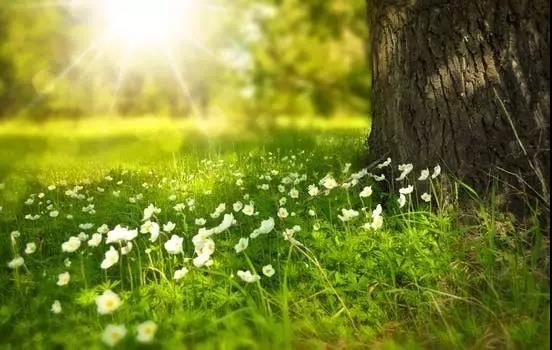 What is chicken wenge bracelet
What is chicken wenge bracelet
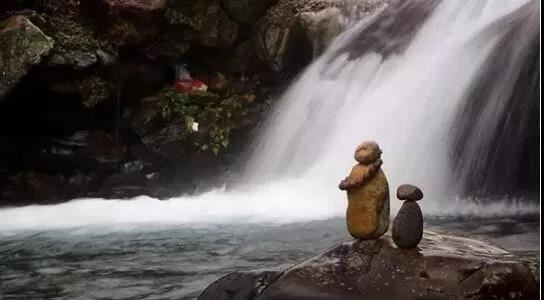 Master Chongci: What are the six senses pure? _What does the purity of the six senses mean?
Master Chongci: What are the six senses pure? _What does the purity of the six senses mean?
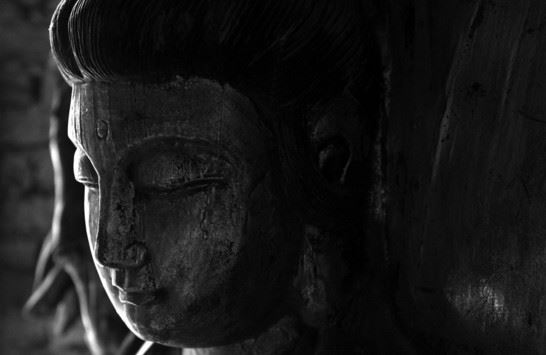 What type of agarwood has a high appreciation potential?
What type of agarwood has a high appreciation potential?
 Master Chongci replied: Please explain what the "clothes" worn by lay people when participating in Buddhist activities and the "clothes" worn by monks after they have received the Five Precepts and Bodhisattva Precepts.
Master Chongci replied: Please explain what the "clothes" worn by lay people when participating in Buddhist activities and the "clothes" worn by monks after they have received the Five Precepts and Bodhisattva Precepts.
 Master Chongci replied: What exactly is superstition?
Master Chongci replied: What exactly is superstition?
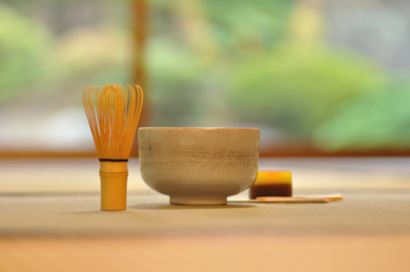 Xue Mo: The true master must understand what the true heart is
Xue Mo: The true master must understand what the true heart is
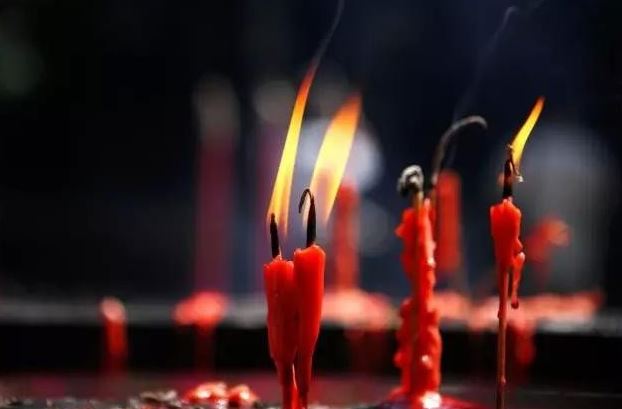 What is the function of cat eye stone
What is the function of cat eye stone
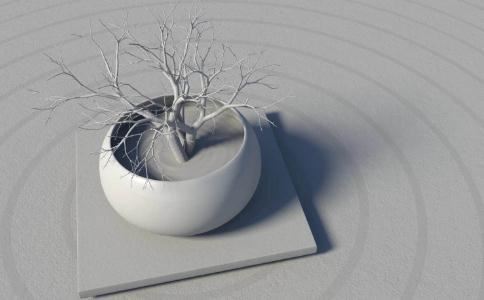 What is the function of peridot
What is the function of peridot
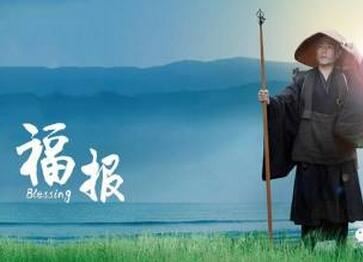 Master Zhumo: It can treat various physical and mental illnesses. Do you know what it is?
Master Zhumo: It can treat various physical and mental illnesses. Do you know what it is?
 Master Zhumo: What is the most reliable thing in life?
Master Zhumo: What is the most reliable thing in life?
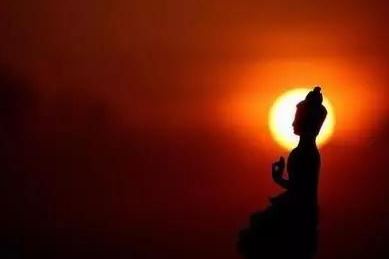 Master Zhenyuan replied: What is the Dharma name of the eighth arhat among the hundreds of arhats?
Master Zhenyuan replied: What is the Dharma name of the eighth arhat among the hundreds of arhats?
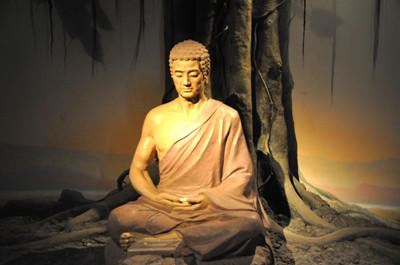 Master Zhenyuan replied: What is the reason why my 5-year-old daughter was frightened and crying in her sleep?
Master Zhenyuan replied: What is the reason why my 5-year-old daughter was frightened and crying in her sleep?
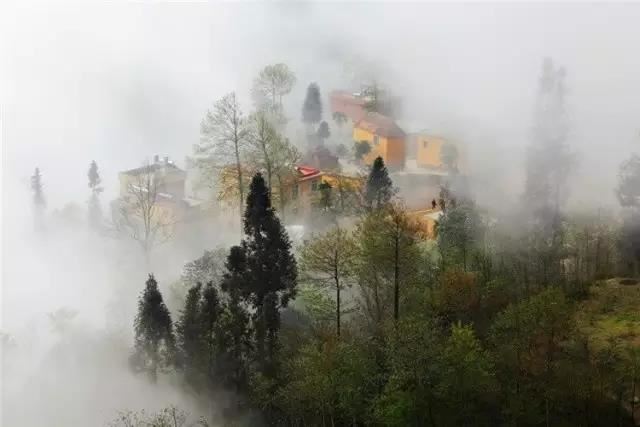 Master Juezhen: What does the Three Refuges mean _Why take refuge in the Three Treasures
Master Juezhen: What does the Three Refuges mean _Why take refuge in the Three Treasures
 Master Juezhen: What does fatalism mean?Dependence can break fate
Master Juezhen: What does fatalism mean?Dependence can break fate
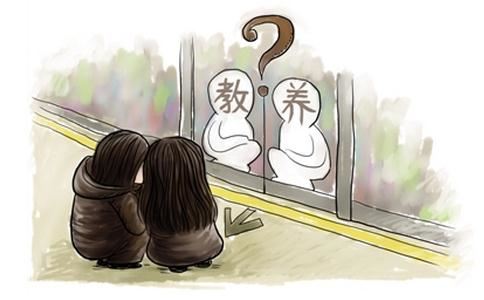 What is the function of lapis lazuli?
What is the function of lapis lazuli?
 Master Zhimin: What are the consequences of snoring?Lower appearance and reduce IQ
Master Zhimin: What are the consequences of snoring?Lower appearance and reduce IQ
 Master Zhimin: Master Zhimin answered: What are the taboos in reciting various mantras of Buddhas and Bodhisattvas?
Master Zhimin: Master Zhimin answered: What are the taboos in reciting various mantras of Buddhas and Bodhisattvas?
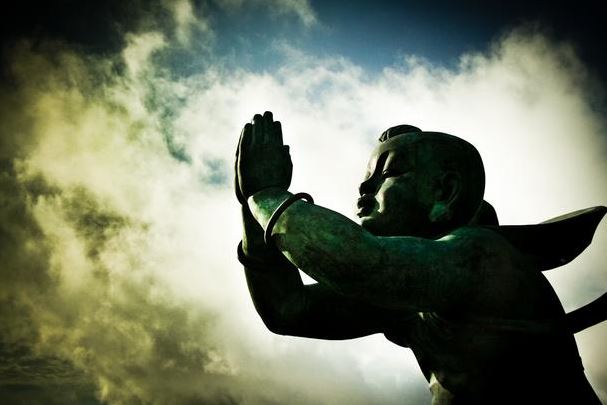 Master Zhimin: Master Zhimin answers: Use wisdom to fundamentally eliminate troubles, such as this kind of greed for the form and dust, is there any other way?
Master Zhimin: Master Zhimin answers: Use wisdom to fundamentally eliminate troubles, such as this kind of greed for the form and dust, is there any other way?
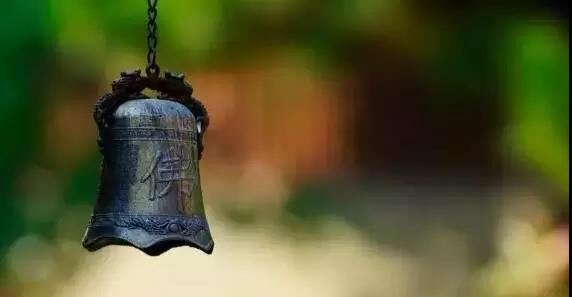 Master Da'an: What is a straight heart? Why do you say that the hearts of ordinary people are mostly curved?
Master Da'an: What is a straight heart? Why do you say that the hearts of ordinary people are mostly curved?
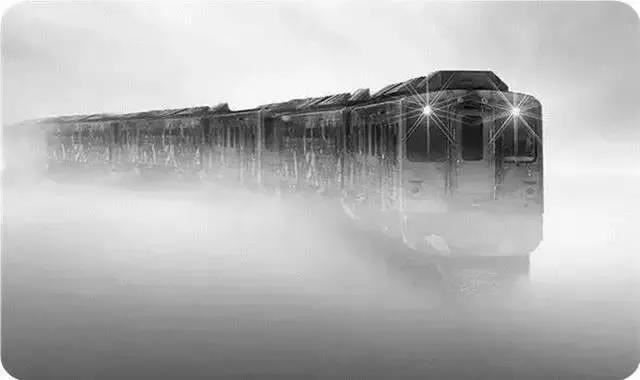 In what situations does agarwood not be calculated by weight?
In what situations does agarwood not be calculated by weight?
 Master Daily: What should I practice after taking refuge?
Master Daily: What should I practice after taking refuge?
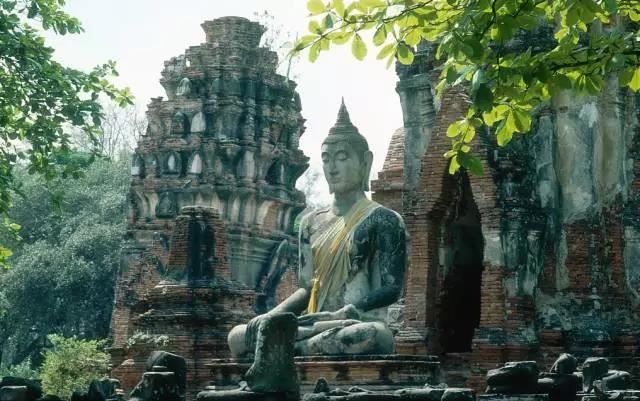 What does different numbers of agarwood Buddhist beads represent?
What does different numbers of agarwood Buddhist beads represent?
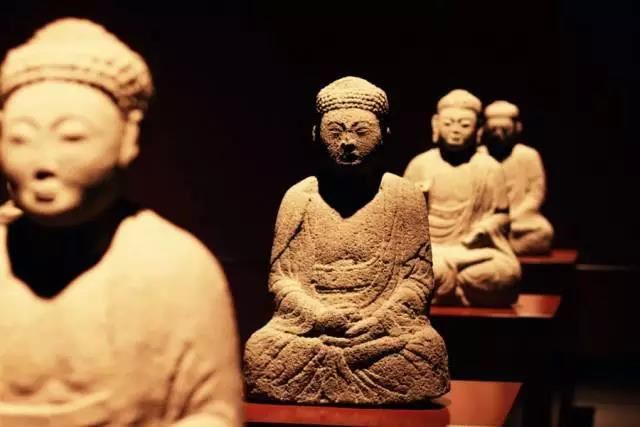 Master Wei Chuan: What are the conditions for converting to Buddhism _Conditions for converting to Buddhism
Master Wei Chuan: What are the conditions for converting to Buddhism _Conditions for converting to Buddhism
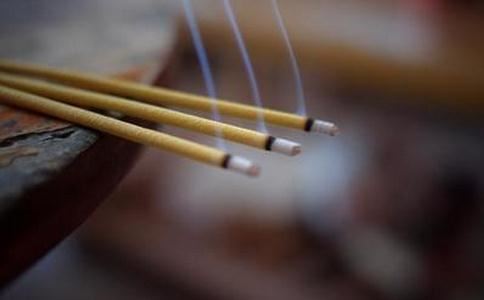 What is the wealth that truly belongs to you?
What is the wealth that truly belongs to you?
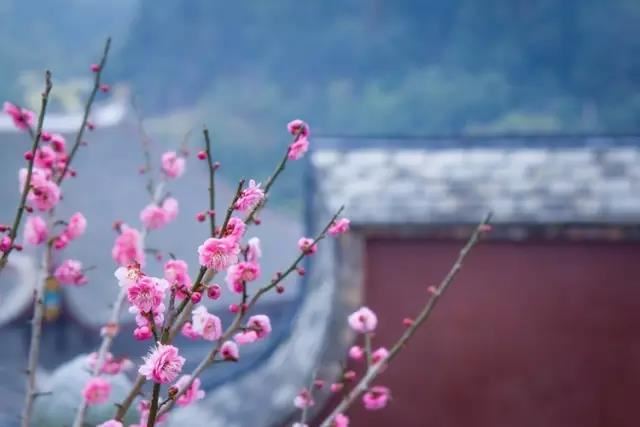 16 Where did my father go after his death?
16 Where did my father go after his death?
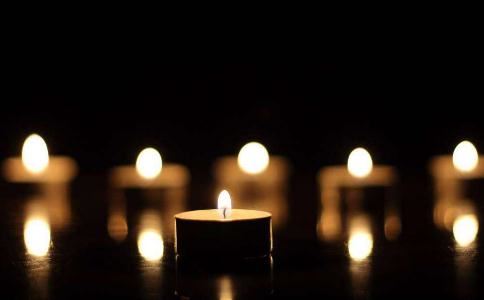 17 What state did my parents go to after their death?What's the situation?
17 What state did my parents go to after their death?What's the situation?
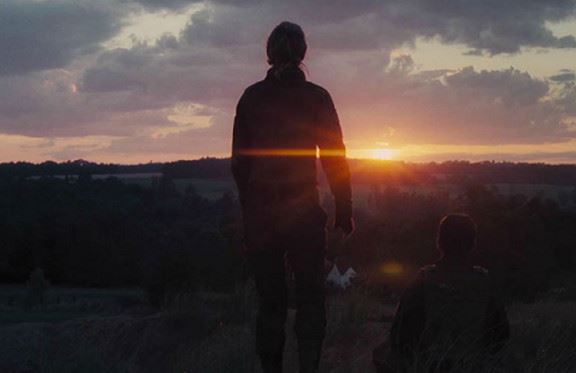 8 What karma makes my father burned by fire but survived death?
8 What karma makes my father burned by fire but survived death?
 5 What karma makes my aunt's uterus have fascia
5 What karma makes my aunt's uterus have fascia
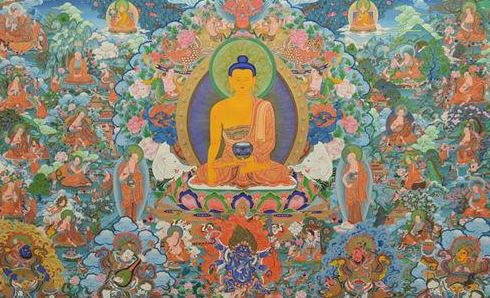 Master Xuanhua: What is rebirth with karma?
Master Xuanhua: What is rebirth with karma?
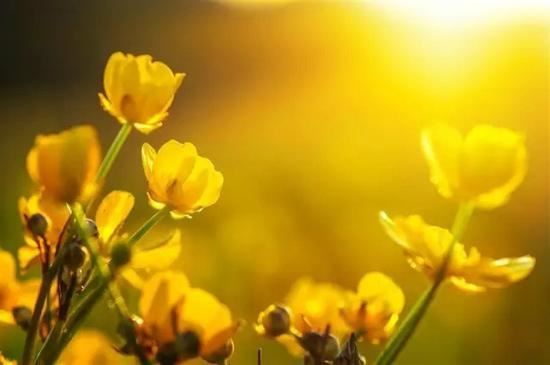 58 What karma makes my father thrown into the trash can when he is born, and let...
58 What karma makes my father thrown into the trash can when he is born, and let...
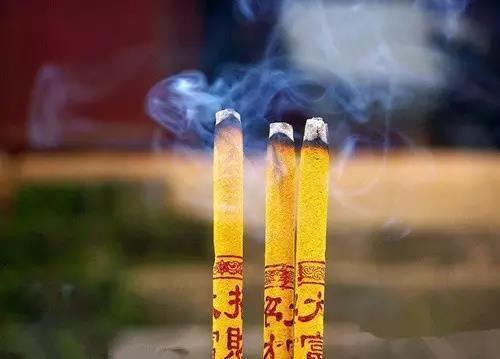 59 What karma caused my father to be shot by his own employees?
59 What karma caused my father to be shot by his own employees?
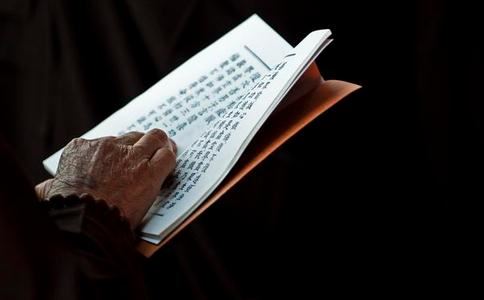 72 My father passed away due to lung cancer. What evil karma did that come from?
72 My father passed away due to lung cancer. What evil karma did that come from?
 What are the responses to worshiping Buddha
What are the responses to worshiping Buddha
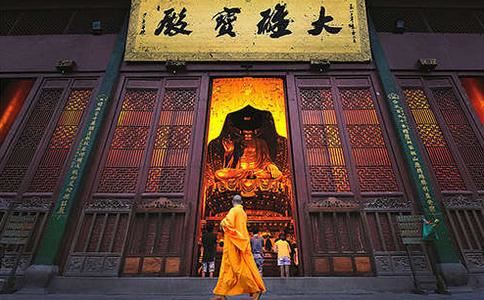 Master Jingbo: What is the family?
Master Jingbo: What is the family?
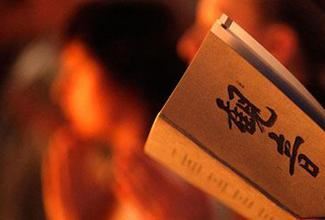 103 What karma makes his father's debtor unable to pay off his debt, making him nervous and...
103 What karma makes his father's debtor unable to pay off his debt, making him nervous and...
 112 Grandpa and grandma love to cultivate merits. Where did they go after they passed away?
112 Grandpa and grandma love to cultivate merits. Where did they go after they passed away?
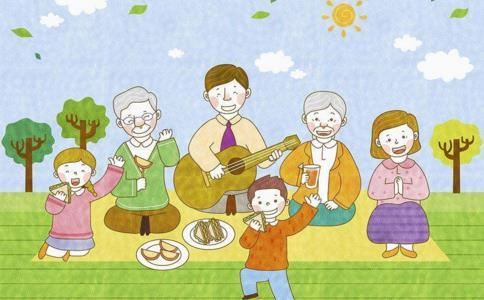 121 What karma has broken my family, what kind of thing each person has created...
121 What karma has broken my family, what kind of thing each person has created...
 89 What evil karma does my father have to suffer from diabetes and have a stroke?
89 What evil karma does my father have to suffer from diabetes and have a stroke?
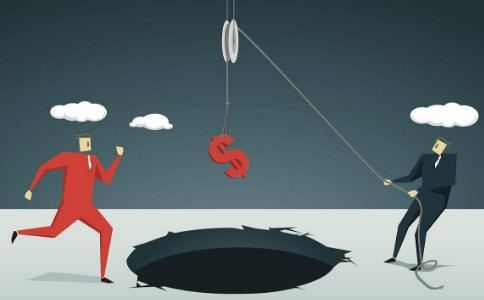 What the hell is a cigarette needle
What the hell is a cigarette needle
 What are the responses to reciting the Cundi Mantra
What are the responses to reciting the Cundi Mantra
 Agarwood Dictionary - Hui'an: What is Hui'an agarwood?Characteristics of Hui'an Shen
Agarwood Dictionary - Hui'an: What is Hui'an agarwood?Characteristics of Hui'an Shen
 Master Renqing: What is the incorrect knowledge that slanders the Three Jewels and all heretics
Master Renqing: What is the incorrect knowledge that slanders the Three Jewels and all heretics
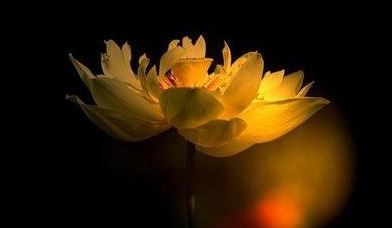 132 What kind of karma does a father have to shorten his life?
132 What kind of karma does a father have to shorten his life?
 Master Minghai: What does it mean to see the Buddha and realize the truth of the flowers blooming in the dedication text?
Master Minghai: What does it mean to see the Buddha and realize the truth of the flowers blooming in the dedication text?
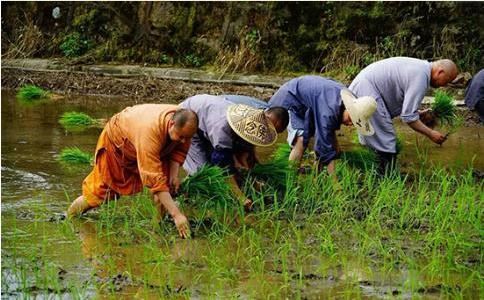 Agarwood Dictionary - Ant Density: What is Ant Density?Characteristics and pictures of ants agarwood
Agarwood Dictionary - Ant Density: What is Ant Density?Characteristics and pictures of ants agarwood
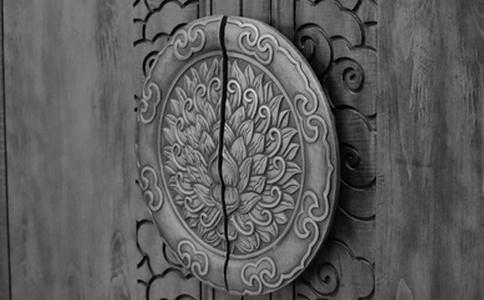 Master Minghai: What does dependent origination mean and emptiness and selflessness? _A brief explanation of the emptiness and selflessness of dependent origination
Master Minghai: What does dependent origination mean and emptiness and selflessness? _A brief explanation of the emptiness and selflessness of dependent origination
 Master Minghai: What does the Dharma mean? _Will there be conflicts in practicing multiple methods?
Master Minghai: What does the Dharma mean? _Will there be conflicts in practicing multiple methods?
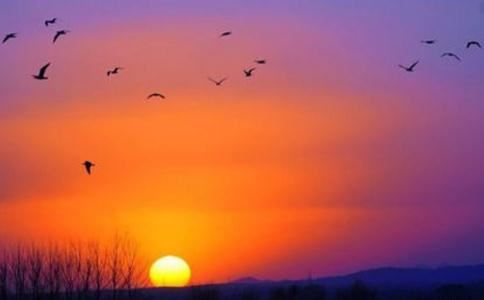 Master Dazhao: Someone asked me what the meaning of life is?
Master Dazhao: Someone asked me what the meaning of life is?
 Master Jingyin: What is the real motivation for meditation?Get rid of suffering and joy
Master Jingyin: What is the real motivation for meditation?Get rid of suffering and joy
 Master Jingyin: What does all dharmas mean? _The meaning of all dharmas _Interpretation of all dharmas as meanings
Master Jingyin: What does all dharmas mean? _The meaning of all dharmas _Interpretation of all dharmas as meanings
 Master Jingyin: How much donation is done _Seven kinds of donations that donate without money
Master Jingyin: How much donation is done _Seven kinds of donations that donate without money
 What is the true meaning of releasing animals?What are the benefits of releasing animals?
What is the true meaning of releasing animals?What are the benefits of releasing animals?
 What are the benefits of releasing animals more?
What are the benefits of releasing animals more?
 Huashan Siguo Cliff: What did we learn when releasing animals?
Huashan Siguo Cliff: What did we learn when releasing animals?
 What do the six countries and five flavors in agarwood mean?
What do the six countries and five flavors in agarwood mean?
 What should you pay attention to when wearing crystals?
What should you pay attention to when wearing crystals?
 Master Xuanhua: When you die, where will your love run to?
Master Xuanhua: When you die, where will your love run to?
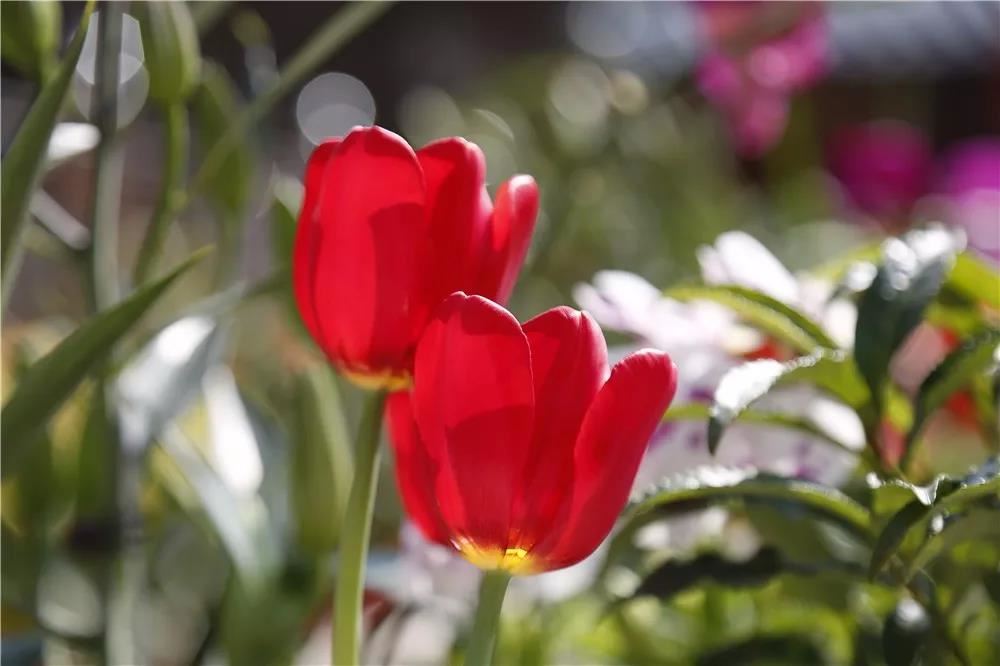 What is chicken bone fragrance?What does the chicken bone fragrance in agarwood refer to?
What is chicken bone fragrance?What does the chicken bone fragrance in agarwood refer to?
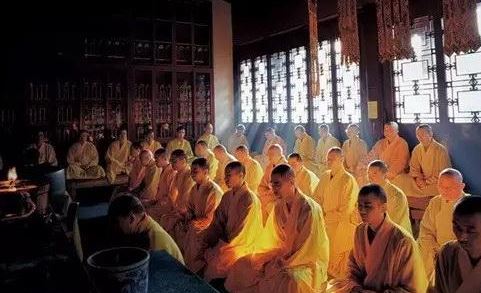 What is agarwood mountain?The History and Value of Agarwood Mountain
What is agarwood mountain?The History and Value of Agarwood Mountain
 Master Xuanhua: If you have this kind of visual observation, you will lose all your troubles and worries.
Master Xuanhua: If you have this kind of visual observation, you will lose all your troubles and worries.
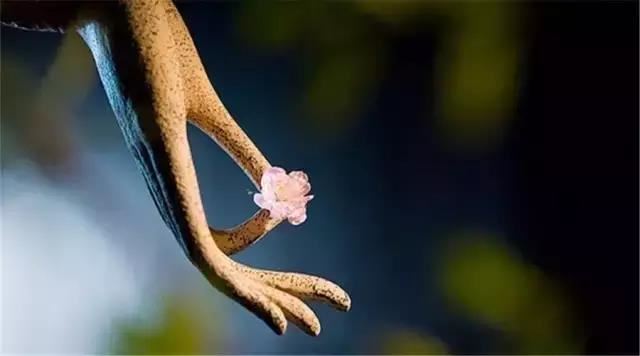 Master Yuexi: Zen Master Yuexi replied: According to my explanation, Buddha nature is still alive, so what else is there to be ignorant and enlightenment?
Master Yuexi: Zen Master Yuexi replied: According to my explanation, Buddha nature is still alive, so what else is there to be ignorant and enlightenment?
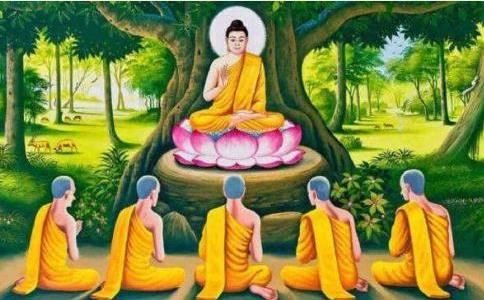 Master Yuexi: Zen Master Yuexi answered: What are you asking about is not Buddha nature. What is the realm?
Master Yuexi: Zen Master Yuexi answered: What are you asking about is not Buddha nature. What is the realm?
 Master Da'an: What is your purpose of chanting Buddha's name?
Master Da'an: What is your purpose of chanting Buddha's name?
 What is beeswax? What is beeswax?
What is beeswax? What is beeswax?
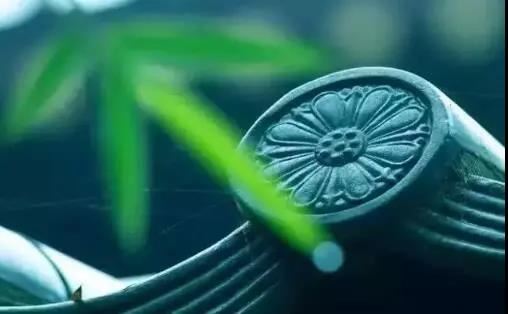 Master Da'an: What do you get by chanting Buddha's name?
Master Da'an: What do you get by chanting Buddha's name?
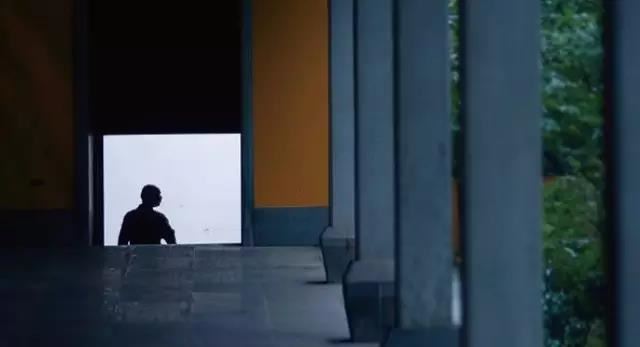 Master Xuanhua: No matter what serious sins you have committed in the past, you can eliminate them by reciting this mantra.
Master Xuanhua: No matter what serious sins you have committed in the past, you can eliminate them by reciting this mantra.
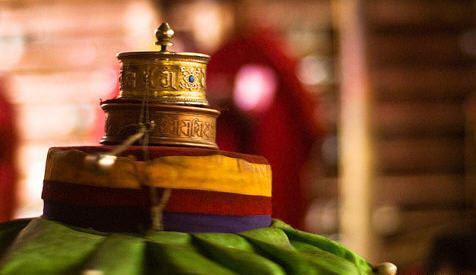 What are the effects of wearing amulets
What are the effects of wearing amulets
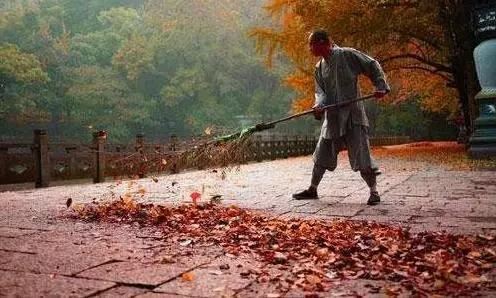 Summer is coming, what to eat to beautify and protect the heat
Summer is coming, what to eat to beautify and protect the heat
 What does the stone mill hell mean?
What does the stone mill hell mean?
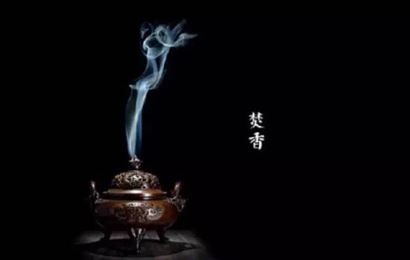 What is the meaning of the Eighteen-Subs Bracelet that was popular in the Qing Palace?What are the eighteen realms of Buddhism?
What is the meaning of the Eighteen-Subs Bracelet that was popular in the Qing Palace?What are the eighteen realms of Buddhism?
What should we transform into when we practice Vajrasattva?
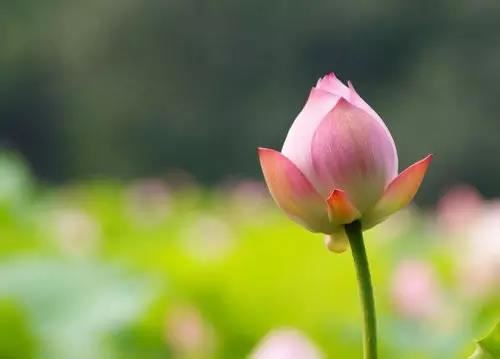 Stay away from all inverted dreams, what exactly do the eight words "Prajna Paramita Heart Sutra" mean?
Stay away from all inverted dreams, what exactly do the eight words "Prajna Paramita Heart Sutra" mean?
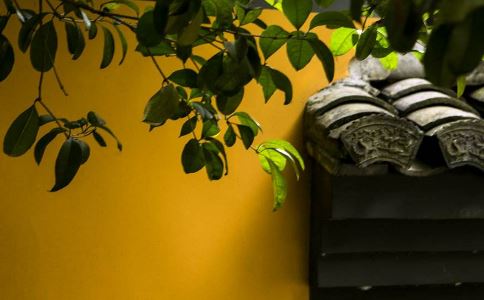 Master Pure Land Dharma: What is the most important, the pure mind is the most important
Master Pure Land Dharma: What is the most important, the pure mind is the most important
 What vegetarian food should I eat to nourish my kidney in spring?
What vegetarian food should I eat to nourish my kidney in spring?
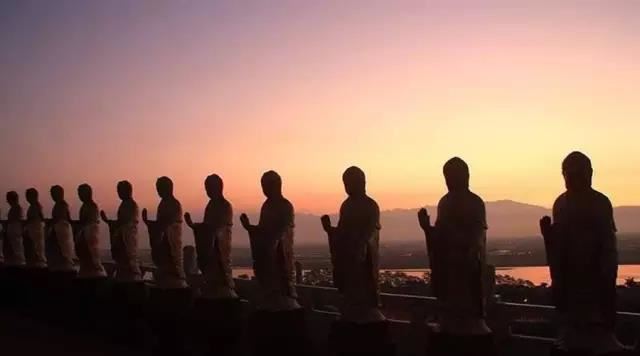 Master Pure Land Dharma: How can you cultivate a handsome appearance?
Master Pure Land Dharma: How can you cultivate a handsome appearance?
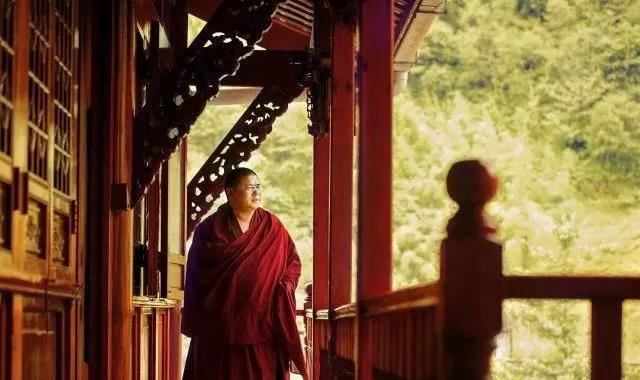 Liu Suyun: How to test how hard you endure humiliation?
Liu Suyun: How to test how hard you endure humiliation?
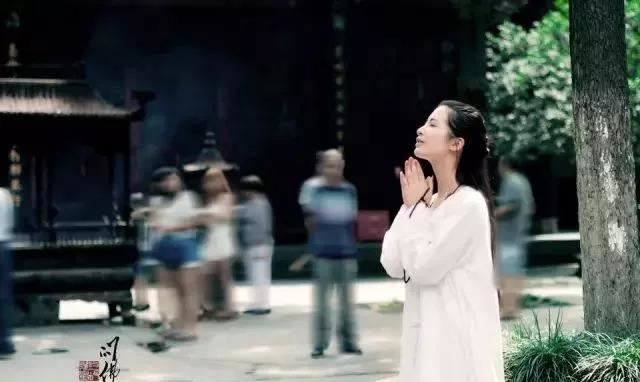 What kind of Buddhist beads are good for the five elements to bring?
What kind of Buddhist beads are good for the five elements to bring?
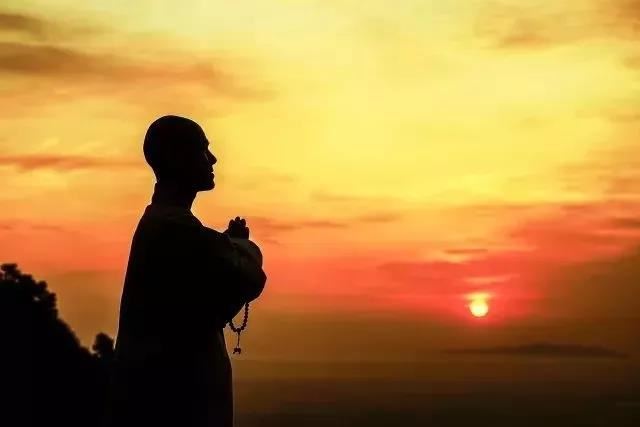 Buddhist scriptures tell you what a bitch is!
Buddhist scriptures tell you what a bitch is!
What benefits can study Buddhism bring to me
 What is the difference between large-leafed rosewood and small-leafed rosewood?How to identify it?
What is the difference between large-leafed rosewood and small-leafed rosewood?How to identify it?
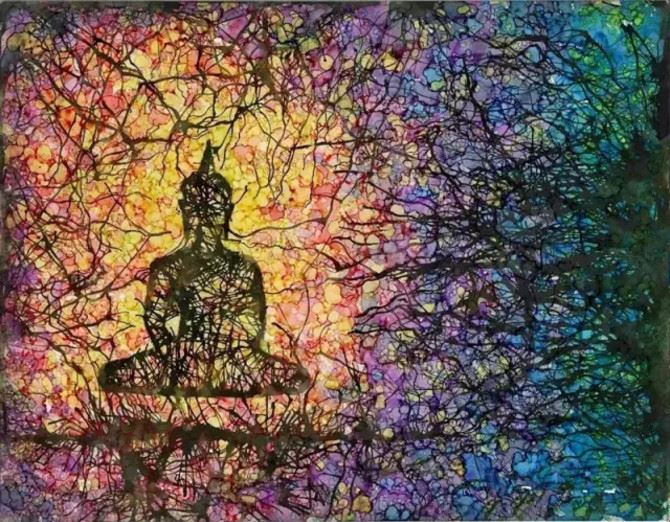 Master Silence: The Meaning of Life _What is the meaning of life _How to clarify the meaning of life?
Master Silence: The Meaning of Life _What is the meaning of life _How to clarify the meaning of life?
 Master Xuanhua: I recite the Great Compassion Mantra like this and I want to get a test of everything I want
Master Xuanhua: I recite the Great Compassion Mantra like this and I want to get a test of everything I want
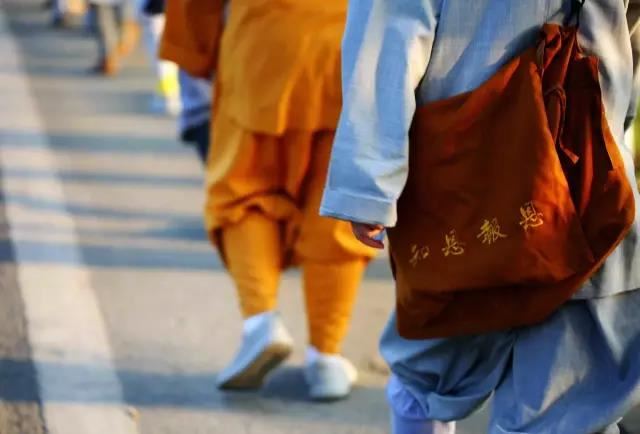 Master Silence: What is "culture" _Do you have knowledge mean you have culture?
Master Silence: What is "culture" _Do you have knowledge mean you have culture?
Complete collection of Buddhist scriptures
Share on WeChat
Scan the QR code to share on WeChat or Moments

